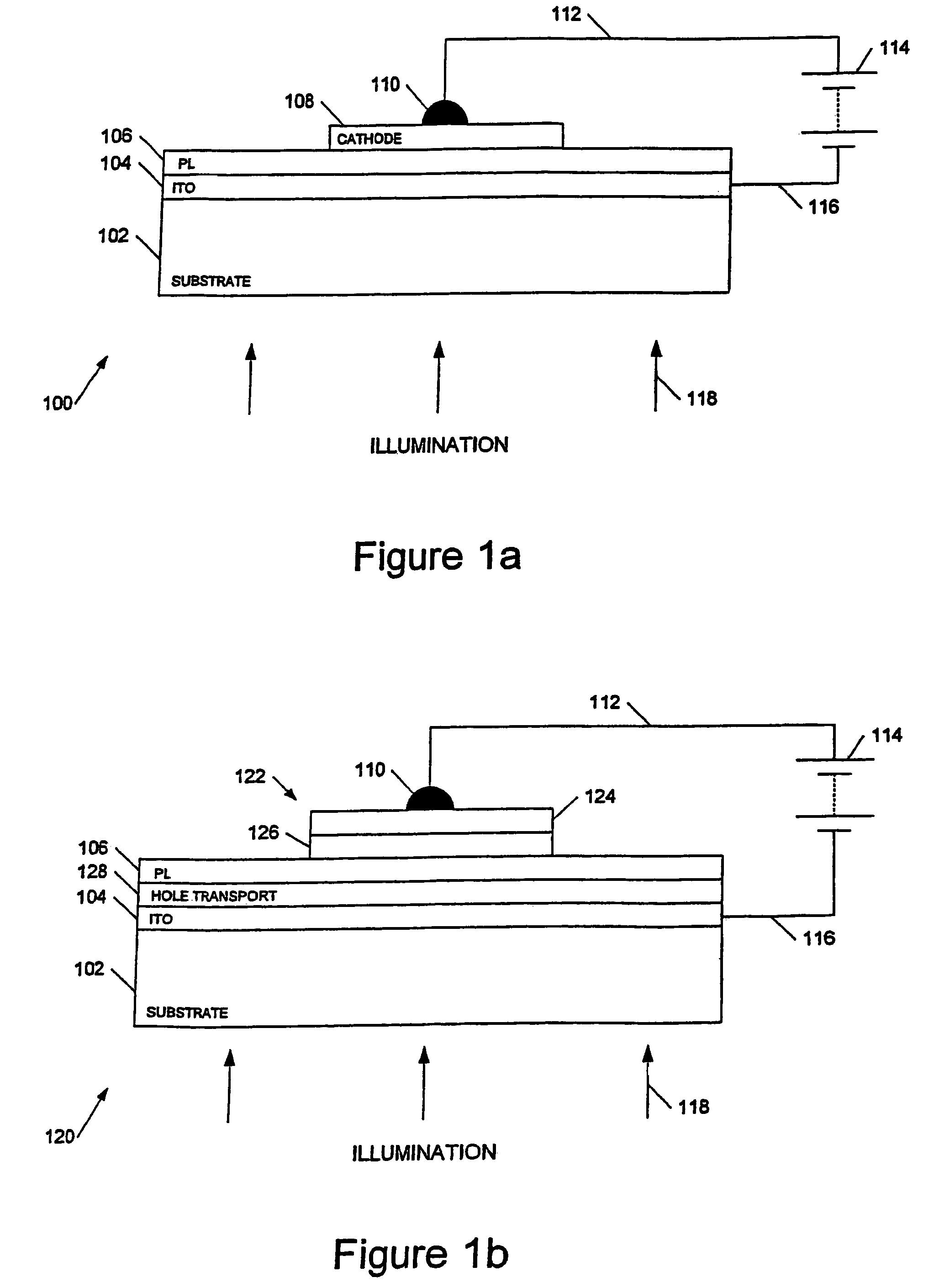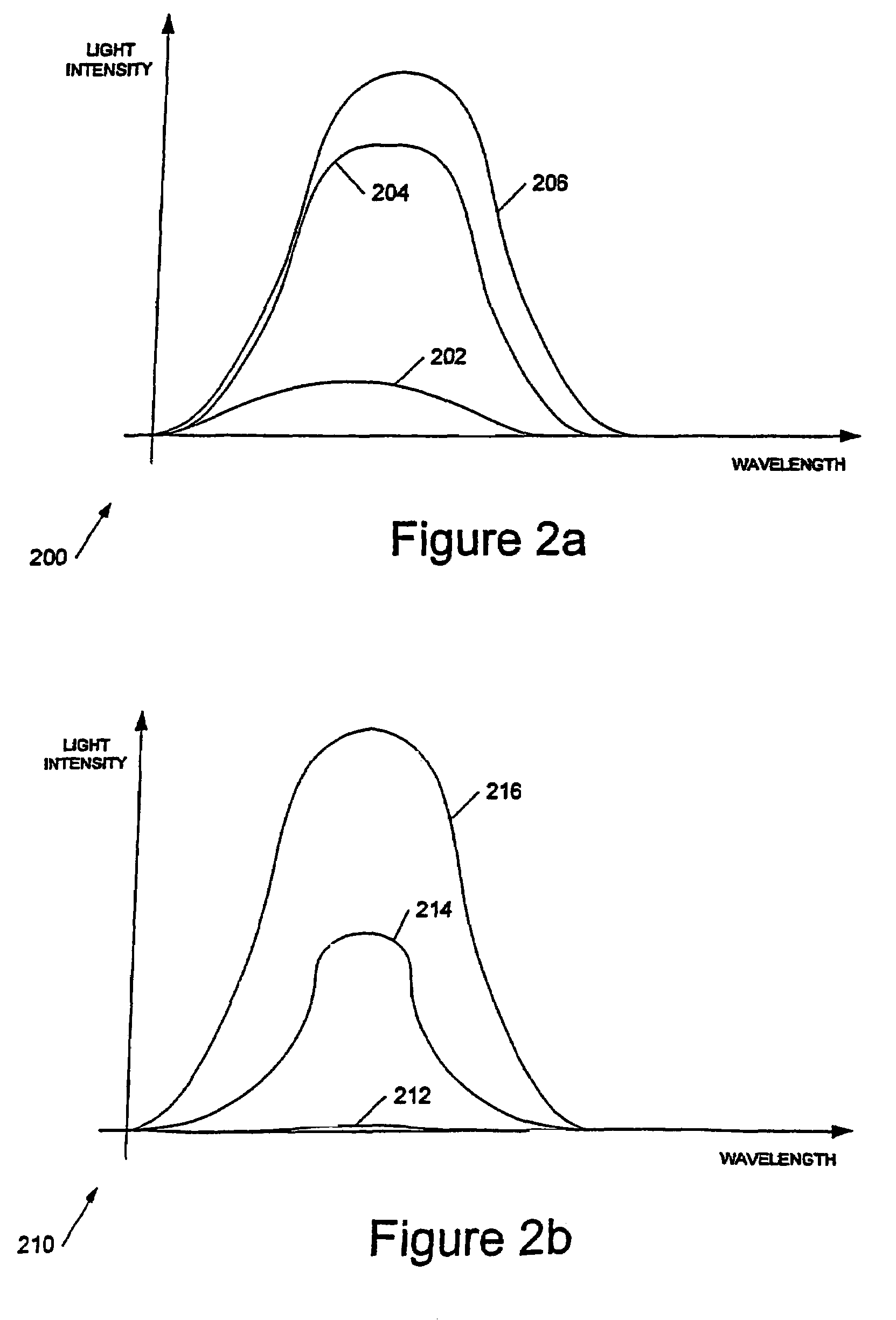Optoelectronic displays
a display and optoelectronic technology, applied in the field of display drivers, can solve the problems of very low power consumption of this display method, and achieve the effect of reducing driving voltage and preventing radiative recombination
- Summary
- Abstract
- Description
- Claims
- Application Information
AI Technical Summary
Benefits of technology
Problems solved by technology
Method used
Image
Examples
examples
[0132]The results from two exemplary devices will be presented. The is comprised an 80:20 polymer blend of F8BT:TFB with a two layer calcium / aluminium cathode. The second comprised a 79:20:1 polymer blend of F8BT:TFB:poly(2,7-(9,9-di-n-octylfluorene)-co-(2,5-thienylene-3,6-benzothiadiazole-2,5-thienylene) with a three layer cathode of lithium fluoride / calcium / aluminium. Both devices photoluminesced in the yellow and had an intrinsic yellow colouration.
[0133]FIGS. 8a and 8b show the variation of photoluminescent emission with reverse bias for the first and second devices respectively. In each case the devices were excited using light having a wavelength of 466 mm, from monochromator 706, and filter 718 and photodiode 720 were arranged to collect light of a wavelength longer than 570 nm. The two graphs have been normalised to a maximum 100% photoluminescence level at zero applied bias.
[0134]The two graphs show that with a reverse bias voltage of around 20 volts the photoluminescence i...
PUM
| Property | Measurement | Unit |
|---|---|---|
| wavelength | aaaaa | aaaaa |
| wavelength | aaaaa | aaaaa |
| wavelength | aaaaa | aaaaa |
Abstract
Description
Claims
Application Information
 Login to View More
Login to View More - R&D
- Intellectual Property
- Life Sciences
- Materials
- Tech Scout
- Unparalleled Data Quality
- Higher Quality Content
- 60% Fewer Hallucinations
Browse by: Latest US Patents, China's latest patents, Technical Efficacy Thesaurus, Application Domain, Technology Topic, Popular Technical Reports.
© 2025 PatSnap. All rights reserved.Legal|Privacy policy|Modern Slavery Act Transparency Statement|Sitemap|About US| Contact US: help@patsnap.com



